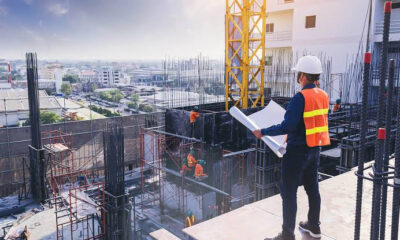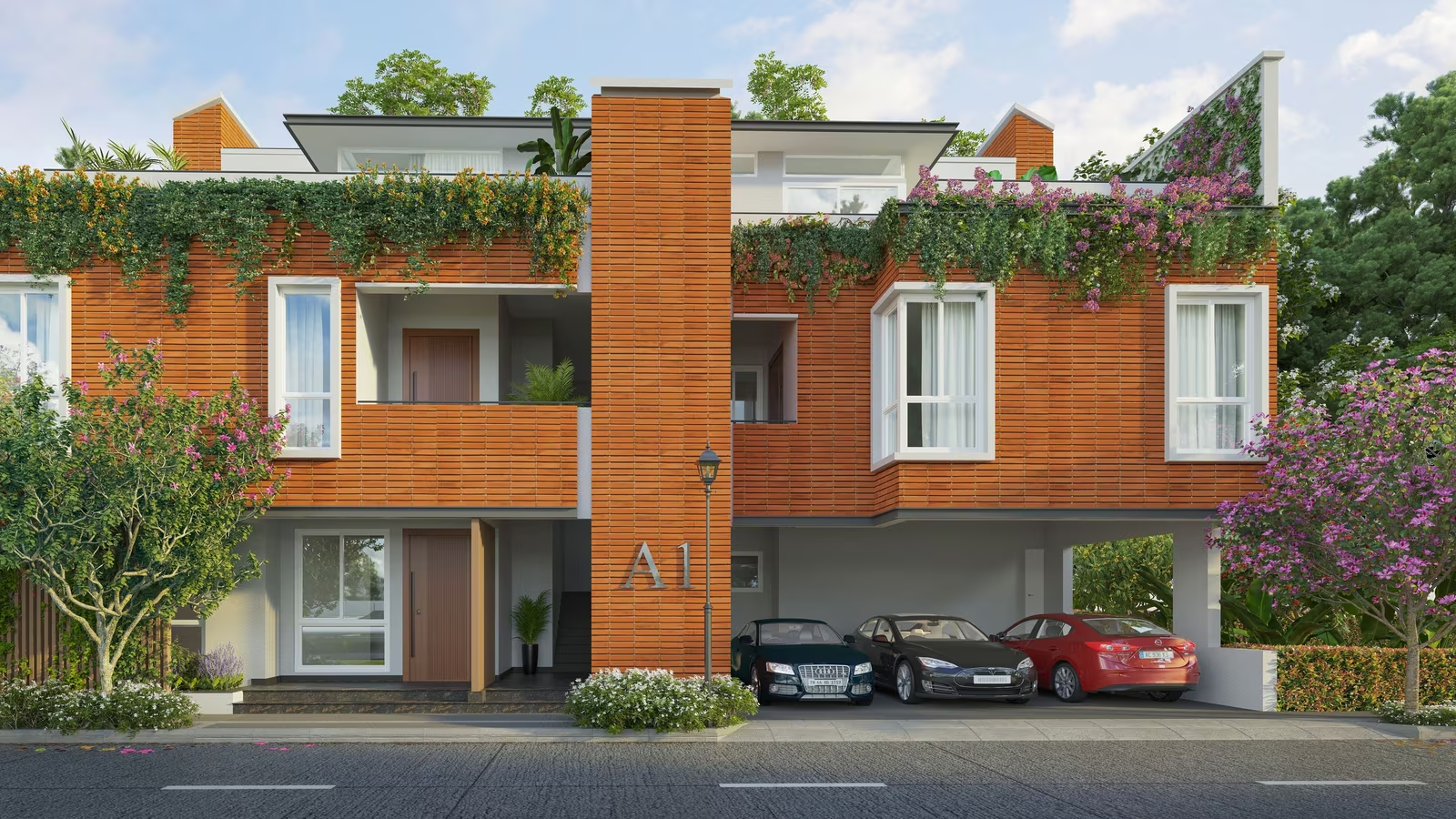News
Real Estate PE Investments Decline 26% in 9M FY24 – ANAROCK Capital FLUX Report


Mumbai, January 9, 2024: PE Investments registered a decline of approx. 26% in 9M FY24 as both foreign and domestic investors reported lower activity, finds ANAROCK Capital’s FLUX report for 9M FY24. Activity from foreign investors remained subdued for most of this period due to global geopolitical uncertainties and a high interest rate environment.


Shobhit Agarwal, MD & CEO – ANAROCK Capital, says, “Domestic AIFs have seen lower activity levels as their favoured asset class – residential real estate debt – witnessed lower demand for high-cost funds. Strong residential pre-sales and an accommodative stance by state-owned banks have led to reduced demand for capital from the more expensive alternate investment funds (AIFs).”
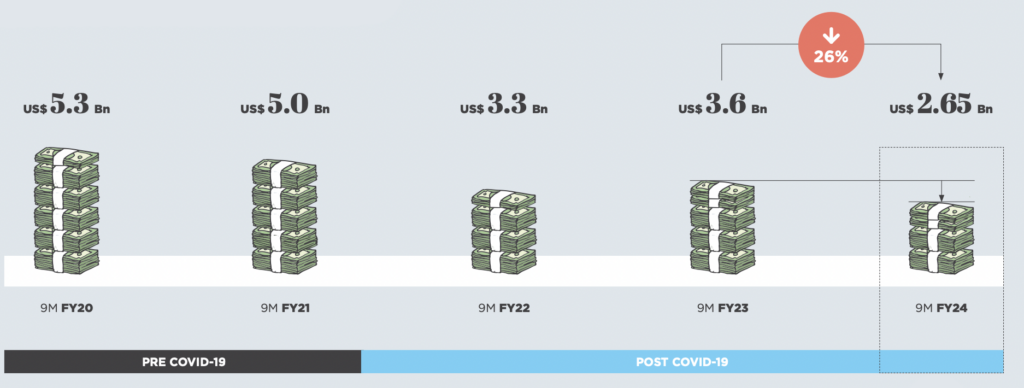

Top 10 PE Deals in 9M FY24


The share of the top 10 deals was 87% of the total value of PE investments in 9M FY24 as compared to 76% in 9M FY23.
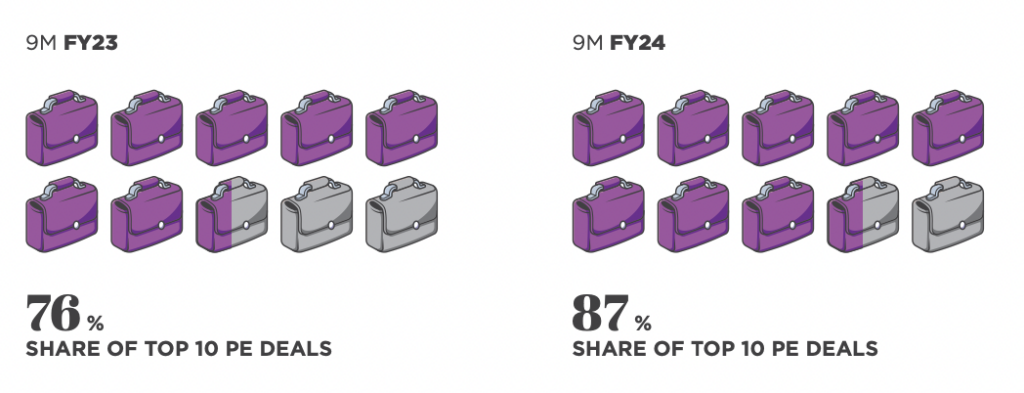

Average Ticket Size
The average ticket size has marginally increased to USD 95 Mn in 9M FY24 from USD 91 Mn in 9M FY23. This is largely due to a large deal in which Brookfield India Real Estate Trust REIT and Singapore’s sovereign wealth fund GIC together acquired two commercial assets – one in Mumbai and the other in Gurugram, NCR, from Brookfield Asset Management with an enterprise value of USD 1.4 Bn.
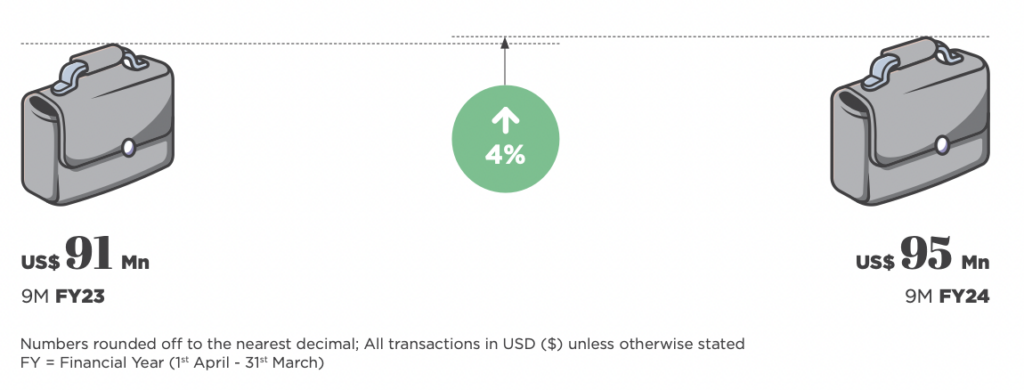

Movement of Capital Inflow
Multi-city transactions increased sharply during 9M FY24, dominated by the Brookfield India REIT & GIC. MMR led the transaction league tables in city-specific transactions, with the region reporting investments of USD 694 Mn in 9M FY24, against USD 375 Mn in 9M FY23.
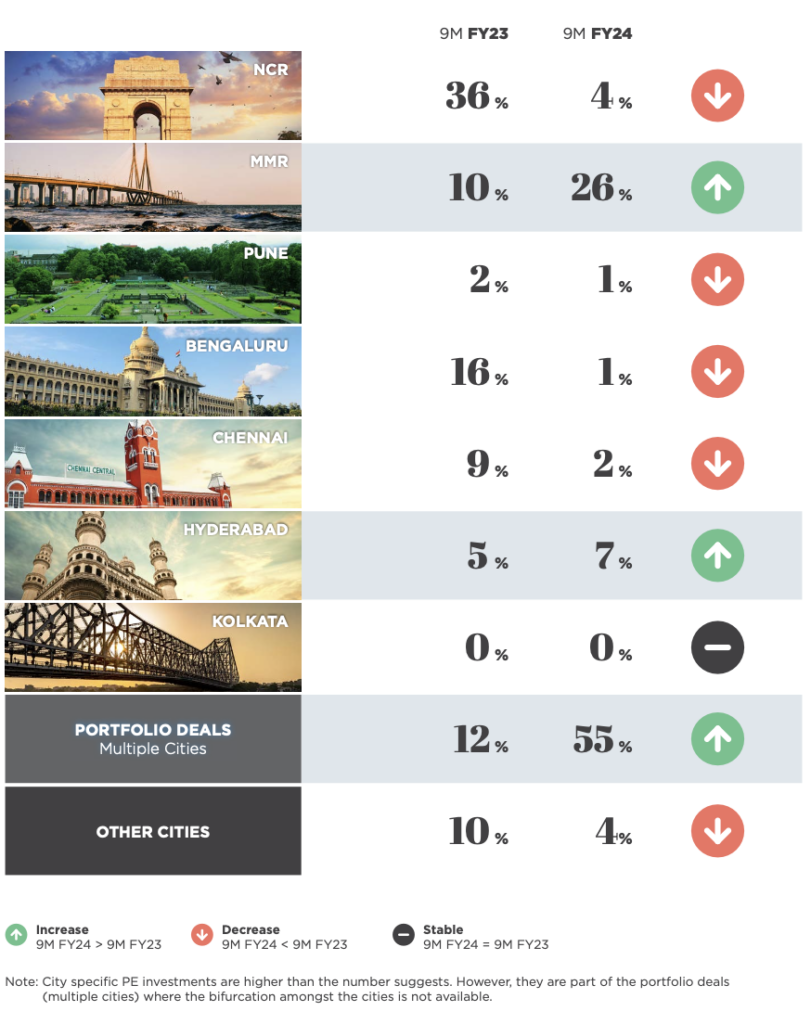

Equity vs Debt Funding
PE investors continue to prefer equity investments, which is visible from the fact that the PE share stood at a healthy at 84%.
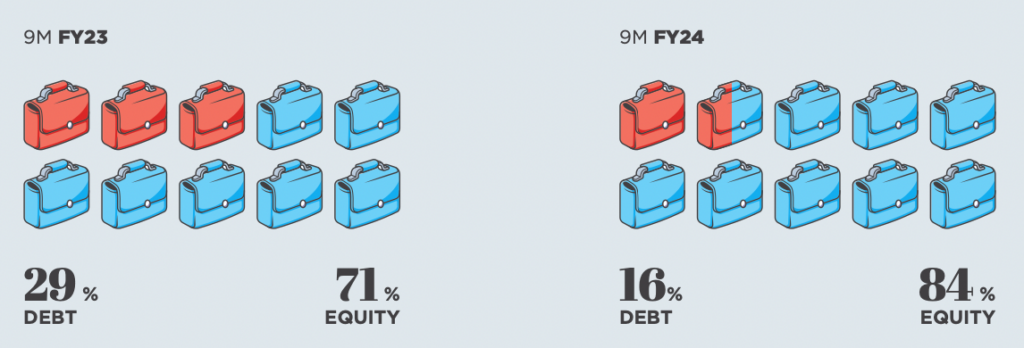

Asset Class-wise Funding
The commercial real estate sector has seen an increased share in PE deals in 9M FY24, driven by a single large transaction and reduced activity in residential real estate.
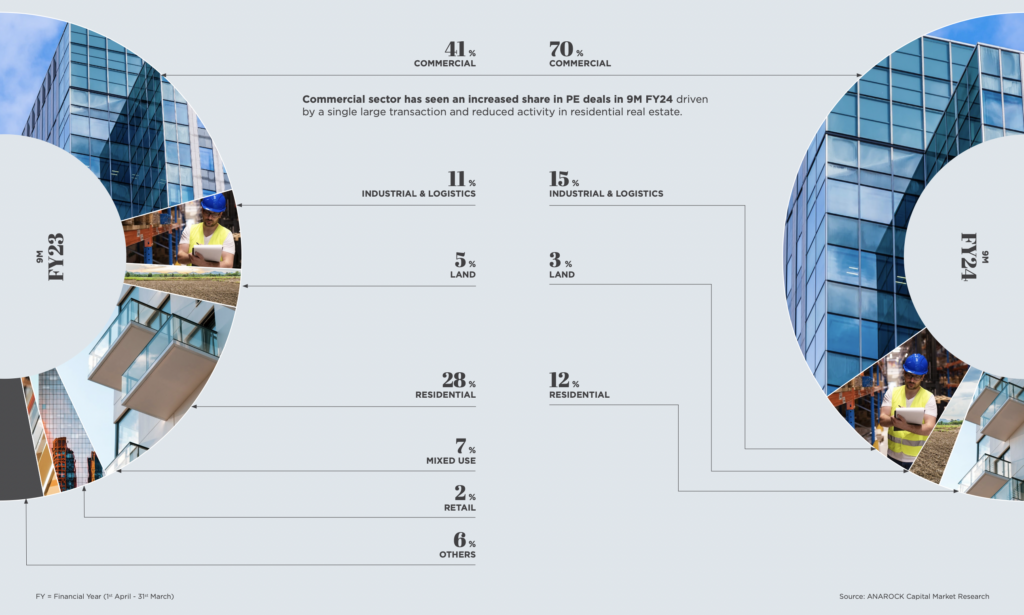

Domestic vs Foreign Funding
“Investments by foreign investors have increased to 86% in 9M FY24 as compared to 79% in 9M FY23,” says Shobhit Agarwal. “Correspondingly, domestic investments decreased to 14% of the total capital inflows into Indian real estate in 9M FY24 – at USD 360 Mn, compared to USD 717 Mn in 9M FY23.
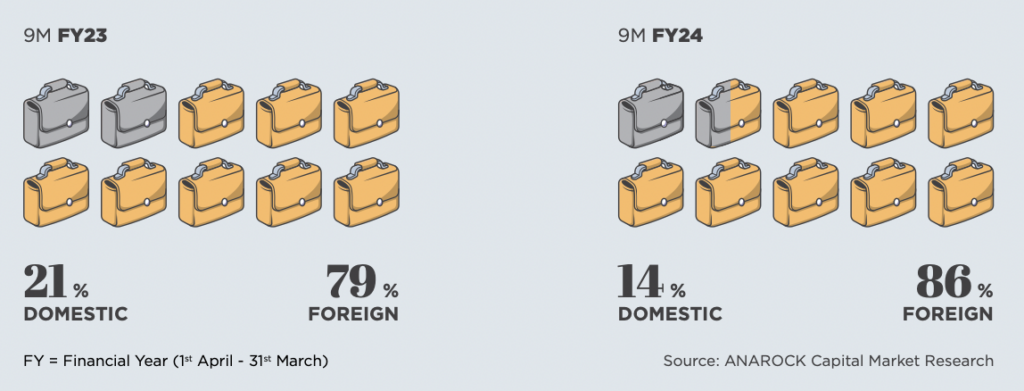

Key Takeaways
Residential Real Estate
- Despite elevated home loan interest rates, the residential real estate sector maintained a robust performance, indicating positive industry sentiment. A significant demand driver is rising rental values across various markets.
- There is a notable interest surge in luxury and premium residential projects as homebuyers aspire to transition to more spacious living in vibrant communities, moving away from standalone structures.
- A demographic shift in homebuyers is evident, with the age bracket dropping from 40+ to sub-40, with attendant implications on product design and the value offering of housing projects.
- The current demand dynamics suggest another strong performance in CY2024.
Office Real Estate
- 9M FY24 saw a robust performance in the commercial office space, particularly in the top 6 cities. The sector’s reliance on IT/ITeS has diminished, with manufacturing, BFSI, and coworking contributing to the resilient demand. Growth in the IT/ITES sector is expected as more employees shift to working from offices for 3-4 days a week.
- On a quarterly basis, the rental landscape displayed positive momentum, with most micro-markets experiencing increases of 0-5%. Of these, Bengaluru, Mumbai, and Chennai, demonstrated stronger rental growth.
- Bengaluru led Pan India supply during the quarter, with notable contributions from Hyderabad, Pune, and Chennai.
Retail Real Estate
- The retail subsegment of Indian real estate is thriving due to economic growth.
- Key players in the nation’s mall development arena viz. DLF, Prestige and Phoenix are aggressively pursuing expansion. This surge in capital allocations aligns with the expansion strategies adopted by leading retailers, resulting in a substantial uptick in store numbers.
- Rentals are expected to firm up, as economic buoyancy and robust consumer sentiment have led to healthy demand and trading densities for retail assets.
Warehousing
- The warehousing sector showed resilience with consistent uptake in 9M FY24, driven by increased demand due to government initiatives such as the PLI scheme, and the global shift towards the China+1 policy.
- While MMR maintained balanced supply and demand, NCR saw higher vacancies as demand softened even as new supply hit the market. The industrial sector outpaced logistics in uptake during Q2 and Q3 FY’24.
- Tier II cities saw sustained institutional interest but lacked major product launches.
- Rising construction and land acquisition costs caused an increase in rentals, except in oversupplied markets like NCR, where rates remained steady.
- Entry yields for greenfield projects range from 9-10% p.a., while capitalization rates for stabilized assets fall within 7.5-8.25% p.a.
-



 News4 weeks ago
News4 weeks agoKW Delhi 6 Mall Onboards New Brands
-



 News4 weeks ago
News4 weeks agoManasum Senior Living Launches IKIGAI GOA, A Senior Living Community in North Goa, in collaboration with Prescon Homes
-



 News4 weeks ago
News4 weeks agoBridging India Divide: Top 5 Tier- 2 Cities to Focus On
-



 News4 weeks ago
News4 weeks agoCommercial Realty Gets Tech Savvy: Fast Construction, Enhanced Convenience
-



 News3 weeks ago
News3 weeks agoGodrej Properties Sells Rs 3k cr+ Homes of Godrej Zenith, Gurugram, within 3 days
-



 News4 weeks ago
News4 weeks agoMultipoint Connection – A Definite Boon
-



 News3 weeks ago
News3 weeks agoRBI’s Status Quo on Key Policy Rates to Help Maintain the Real Estate Growth Momentum, Say Industry Stalwarts
-



 News2 weeks ago
News2 weeks agoOlive Announces Dhruv Kalro as Co-Founder







